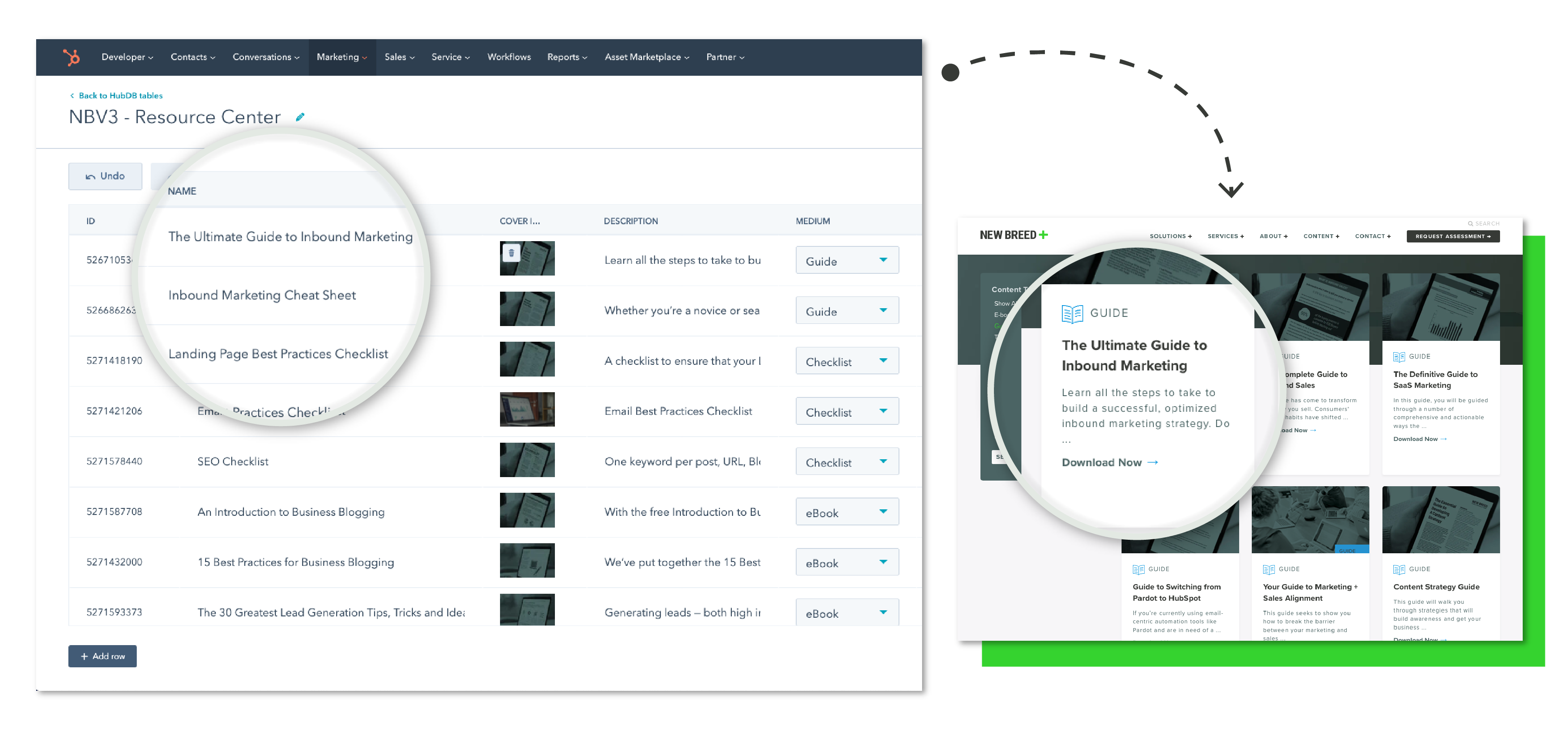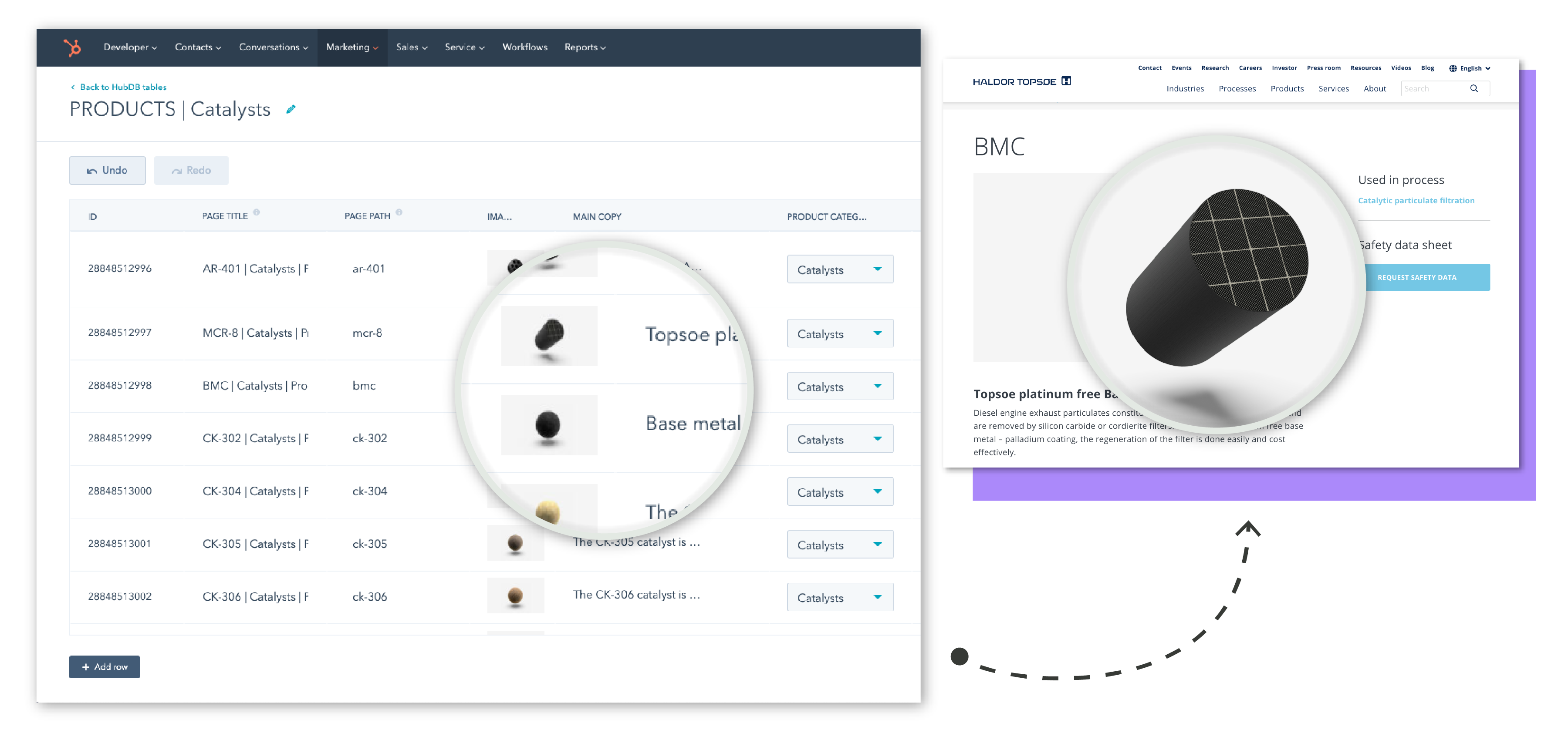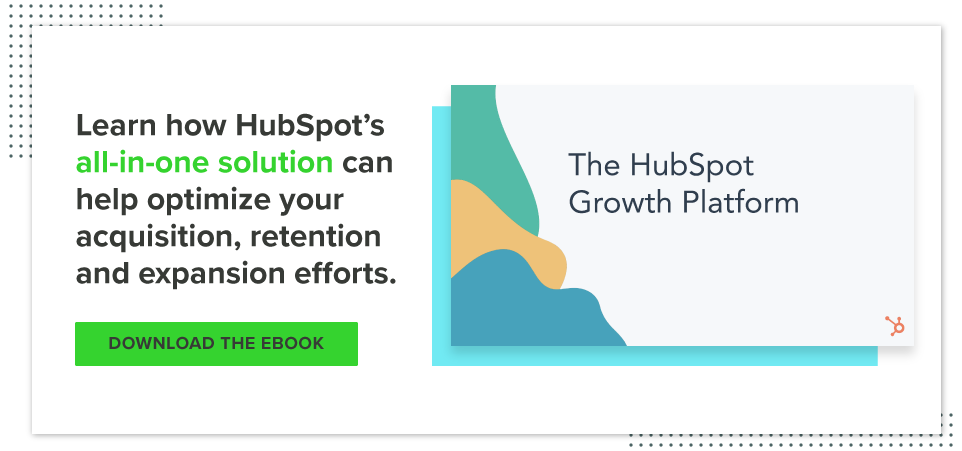HubDB is a relational database that can power dynamic parts of your website. It’s a feature of the HubSpot CMS Hub that allows for massive efficiency gains when dealing with structured content.
Once a HubDB is set up, it’s edited through a simple table interface, so altering your website is similar to editing content in a spreadsheet. You can create dynamic web pages that are represented by a row in a table instead of manually building out a site page using HubSpot’s standard page editor.
HubDB is a very flexible tool, and the list of how it can be leveraged is practically endless, but at New Breed, there are three primary ways we typically leverage HubDB.
1. Filterable Lists (Ex: Resource Libraries)
When you have a listing page with a lot of content that you want to be able to filter, you can use a HubDB table where each row is a piece of content, and the columns are details about that content including tags. On the front-end, each row can be presented as a visual card or section. These cards, for example, can then be filtered based on any categorization scheme you come up with in the database schema and then can be dynamically shown in the relevant areas of your site.

A single table can be used to fill multiple modules and webpages with dynamic content. For example with New Breed’s Resource Library, all of the content offers in the table are displayed on the resource listing page, but the same HubDB that powers that page is also used for resource slider modules across our site. Those sliders only show a portion of the content in the table based on the tags we’ve selected. This gives us the ability to customize the resources displayed based on the context of the current page. For example, on a page related to sales conversion, you would be able to show all the resources tagged with “Sales Conversion.”
In addition to making it easier to display content across your site, using HubDB for this also makes it easier for marketers to maintain all of these assets than if they had to keep track of a bunch of one-off pages.
2. Dynamic Website Pages
In addition to enabling you to display content dynamically around your website, HubDB also lets you create dynamic website pages. While on the front-end these pages have their own URL and don’t appear to be anything special to the user, on the back-end, they’re just a row in a HubDB table, which allows for huge efficiency gains.

This is useful when you’re creating a collection of pages with consistent fields, such as product pages, team pages or event pages.
Instead of having to create a single new page, apply a template, flow content, preview and publish it, you can just enter all the information into a table for as many pages as you need at a time and then publish the table.
This centralizes control of all those assets and makes content production more scalable and efficient.
3. API
HubDB has an API, enabling it to push and pull content from other platforms with APIs as well.
For example, if you use another platform for such things as job listings, video hosting, events or product inventory and you want the content from one of those platforms to display on your HubSpot website, this enables you to do so. This way you won’t waste time manually keeping multiple platforms in sync or relying on clunky iframes to show external content.
While iframes allow you to embed content from other platforms on your website, they don’t give you SEO credit and they’re hard to style and make responsive which makes for a disjointed experience for the end-user. If you pull that same data in through HubDB’s API, it’ll appear as native content on your website, and the user can enjoy a seamless experience.
The Benefits of HubDB
HubDB can make managing your website more efficient and more scalable.
When you have sections of your site built from structured data, it’s easier to maintain them over time in a HubDB as opposed to tracking sprawling pages. HubDB also leaves less room for user error because all that’s required is entering information into the table correctly. Additionally, the way they enable you to pull in content from outside sources allows for huge potential and future growth.
To take it a step further, you can join HubDB tables and create sophisticated relational data structures. For example, imagine a website that listed movies. You might have a table for the movies themselves and then a completely separate table of directors whose fields are related to a person vs a movie. The movie table can then pull in the associated director per film and call up any of the associate director information (name, bio, age, etc).
While HubDB looks more technical than the rest of the HubSpot CMS Hub, it’s still easy to work in for end-users, and it can enable non-technical users to quickly turn content into live webpages.
Christopher Mathieu
Christopher Mathieu is the Chief Services Officer at New Breed, an Elite HubSpot Partner based in Burlington, VT, which helps customers implement the right technology and strategies to unlock meaningful growth. With a background in design, technology, and demand generation, his over two decades of experience allow...





